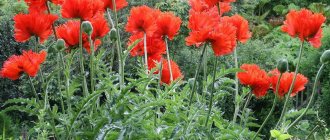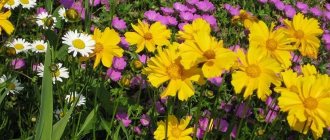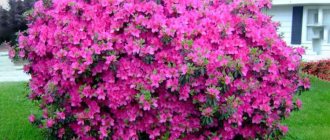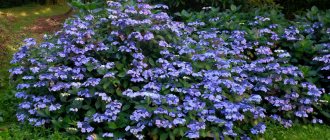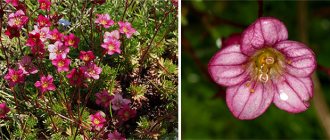The bright, fiery oriental poppy attracts attention with its beauty and rarely leaves anyone indifferent. Interestingly, in addition to the traditional red, its varieties have white, pink, and crimson colors. Therefore, growing perennials in open ground can turn into a fascinating collection of flowers of different shades. All agricultural technology - from planting to propagation and care - does not require significant effort. But it’s still worth knowing its main aspects.
Botanical description of the plant, main characteristics
The growing area of the oriental perennial poppy is the Caucasus, Türkiye and Iran.
The description is as follows:
- The bush is spreading, reaching a height of about 90 cm.
- The stem is a peduncle, erect, less often curved, covered with white fibers at the bottom.
- The root system is powerful, going deep into the ground.
- The leaves are lanceolate, oblong, the edges are pinnately dissected, the color is green, with white fluff.
- Opened buds are 10-20 cm in diameter, the number of petals is 4-6 pieces.
- Color - represented in all shades of red, pink and orange. Some varieties have a dark spot at the base of the flower.
- Stamens are purple or black, elongated.
- The fruits are small grains of brown color and oblong shape.
The flowering of garden perennial poppy lasts from the beginning of June until the second half of July.
Types and varieties
Chinese poppy, as it is also called, includes more than 200 varieties that differ in different colors. In dachas and flower beds, flower growers most often cultivate the most popular varieties:
- Mrs Perry;
- May Queen;
- Indian chief;
- Perry's White.
Almost all varieties of oriental poppy are hybrid. Depending on the variety, the petals of the plant can be colored red, pink, purple, white, or lilac.
All oriental varieties are characterized by a large diameter of flowers
Where can I buy
As for seeds, they can be purchased at any store, although the choice of varieties is not so large.
Varietal perennial oriental poppies are sold mainly by rhizomes. Most often these are plants produced in Holland. The table below shows where you can buy oriental poppy.
| Shop | Cost of planting material, rub. | Is there cash on delivery? | Is there delivery within Russia? |
| zpitomnik.ru | 500 | No | Yes |
| semena-tut.ru | 249 | Yes | Yes |
| garshinka.ru – the largest selection | From 180 to 290 | No | Yes |
Features of planting and agricultural technology
Planting and caring for perennial poppies in open ground will not cause any particular difficulties for the gardener. The plant is quite unpretentious and frost-resistant.
The perennial oriental poppy prefers hills where water does not accumulate. The site must be protected from winds and drafts. Lighting is plentiful.
Landing
Step-by-step algorithm for planting poppy seeds:
- Planting time is spring, when the soil warms up by at least +5 °C.
- The seed material is slightly buried in the soil or simply scattered on top of it.
- The beds are covered with polyethylene to create a greenhouse.
- Watering is carried out as the top layer of soil dries.
- The time for the first shoots to appear is from 10 to 14 days. When seedlings appear, the film must be removed.
Given the unstable spring weather, seedlings must be covered with film when night frosts return.
Autumn sowing of poppy before winter is possible. It is held in November, when the temperature is no higher than +3 °C. At higher temperatures, there is a risk of premature germination of seedlings, which will die during the first cold snap.
Autumn planting is preferable as the grains undergo a natural stratification process. Autumn poppies begin to bloom earlier.
Hardening makes plants more resilient
Poppy bushes grow straggling; this must be taken into account when planting, keeping the distance between grains at least 50 cm. Otherwise, the seedlings will have to be thinned out.
Preparatory work before planting
Before planting, it is necessary to carry out a number of preparatory work:
- The selected area is cleared of weeds and dug up with the addition of humus, compost or other organic matter.
- If planting will be carried out in the spring, it is recommended to stratify the seed material by placing it in the refrigerator for 1 - 1.5 months.
An additional measure is to treat the seeds with a growth stimulant and soak them for 20 minutes in a solution of potassium permanganate for disinfection.
Poppy does not tolerate transplants well. It can grow in one place for 5 to 7 years without losing the vigor of its flowering, so the choice of location must be taken seriously.
If the plant is planned to be planted in a lowland, drainage must be organized to prevent water stagnation.
Strategies for growing poppies from seeds
Poppies are one of those herbaceous plants that respond very poorly to transplantation. If possible, they should always be sown directly at the growing site. Poppies are grown very rarely from seedlings, usually only when the plants are going to be used as potted or container accents.
Conditions for growing poppies
Poppies, regardless of type, are light-loving plants, but perennial species can withstand light shading. Poppies, in theory, are not afraid of even windy areas, but if you do not protect the plant from drafts, its beautiful flowers will quickly fall off. By choosing secluded, warm, protected areas, you will prolong the pleasure of watching the magnificent poppies bloom. The soil for poppies can be chosen from any of the cultivated and non-damp soils, but the best flowering is always observed on nutritious soil. There is a place for poppies in mixed gardens, flower beds, rock gardens or rock gardens, and on the lawn.
When choosing a place for poppies in your garden, it is worth remembering that the flowering of this plant is very short: within a month after its start, the fruits ripen, and then the plant quickly leaves the garden scene. Even the best perennial poppies have a growing season limited to an average of 100 days. Therefore, poppies need to be planted so that neighboring plants can disguise the unattractive fading and then disappearing greenery, or provide for the planting of other seasonal annual stars in place of poppies. The best partners for perennial poppies are delphiniums, cereals, cornflowers, yarrow, asters, speedwells, oregano and cornflowers.
Hollow poppy (Papaver nudicaule). © 99roots
Oriental flower care
If we talk about this decorative, perennial poppy, planting and caring for it will not be difficult. It will delight you with abundant and long-lasting flowering, provided that simple agrotechnical measures are followed.
When caring for poppy seeds, do not forget about applying fertilizers. Although the bush can develop and bloom normally without fertilizing, it is recommended to apply mineral supplements at intervals of 2-4 weeks throughout the season.
The plant responds to fertilizers by forming lush foliage and longer flowering.
The main aspects of care are watering, fertilizing, timely replanting
Watering
Soil moisture should be regular but moderate. The plant does not like excessive moisture.
It is necessary to focus on the condition of the soil - watering is carried out as its top layer dries out.
Temperature
Oriental poppy is a heat-loving plant, but it is not afraid of winter frosts down to -35 ° C, which it can tolerate even without additional insulation.
Sheltering bushes in extreme cold is necessary if the winter season turns out to be snowless.
Mulch can be used as insulation
Garter bushes
Oriental poppy bushes are quite tall; they can break off under the influence of winds or under the weight of large buds.
Wooden pegs are used as support, which are placed near the bushes. The plant is tied to the supports with a rope.
Transfer
Poppy transplantation is carried out every 5-7 years. The plant must be carefully dug up without damaging the deep root system and without destroying the earthen ball around it. Together with a lump of old soil, the bush is transferred to a new place.
The time for transplantation is autumn, when the poppy has faded.
Application in landscape design
Light varieties of poppies look unique, ghostly and mystical; white ones would be appropriate in “moon gardens.”
They go well with flowers of lilac shades, such as irises.
Poppies and miniature irises.
The plant is almost universal, its only serious drawback is the short flowering period and the fragility of the flowers. The latter does not prevent the plant from being popular for cutting - the bright appearance of the oriental poppy outweighs this drawback. In addition to bouquets, it will be good:
- In the flowerbeds.
- In group and single plantings.
- On discounts.
- Mixborders.
- And even in rocky gardens.
Second plan of the border.
Considering the characteristics of poppy, that is, the loss of decorativeness after flowering (the leaves begin to turn yellow), the best place to plant poppy is a skillful combination with other plants that will hide fading bushes or empty space after pruning. These can be any late-flowering perennials:
- asters,
- chrysanthemums,
- cereals,
- daylilies,
- geranium,
- bloodroot.
And also poppy looks great with summer flowers:
- cosmea,
- decorative tobacco,
- kochia.
Poppy can often be seen on the eastern or western side of houses, that is, in partial shade. It really is one of those rare plants that can add bright colors to a slightly shaded area.
Reproduction methods
Poppy is propagated by cuttings, seeds and division.
You can collect the seeds yourself when the seed pods are ripe and plant them immediately in open ground, or prepare seedlings in greenhouse conditions.
But since poppy does not tolerate transplantation well, the seedling method is practically not used.
Division method:
- Bushes that are at least 3 years old are suitable for division. The time for the procedure is spring, before the buds begin to form, or autumn, after the plant has flowered.
- Part of the root system is separated from the side of the mother bush.
- The delenka is carefully examined, damaged or diseased roots are removed.
- The rhizome is planted in the prepared hole.
The first flowering after propagation by division occurs in the next season.
Cuttings:
- shoots at least 10 cm long are cut from the mother bush;
- the cuttings are soaked in a growth stimulator for a day;
- planting is carried out in nutritious, loose soil, pre-moistened.
The top of the cutting must be covered with film or a plastic bottle.
As soon as the cutting takes root, which will be evident from its increased growth, it can be replanted to a permanent place.
